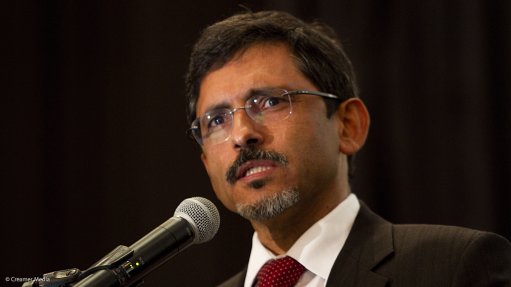
EBRAHIM PATEL Minister Ebrahim Patel announces the purchase of 12 Lodox systems for Gauteng hospitals
Newly elected Minister of Economic Development Ebrahim Patel announced on Thursday that the Gauteng Department of Health had ordered 12 Lodox digital radiography systems worth R60-million for the province's health sector.
The systems were destined for nine public hospitals – New Natalspruit Hospital, Dr George Mukhari Hospital, Steve Biko Academic Hospital, Tembisa Hospital, Helen Joseph Hospital, Tambo Memorial Hospital, Sebokeng Hospital, Kalafong Hospital and Leratong Hospital – and three pathology facilities, namely Pretoria Forensic Pathology, Johannesburg Forensic Pathology and Ga-Rankuwa Forensic Pathology.
Speaking at the Africa Health Expo at Gallagher Estate, in Midrand, the Minister said low-radiation device company Lodox’s system provided an X-ray image of the entire body in 13 seconds and a full body imaging study in two planes in three to five minutes. This was beneficial for medical practitioners as the time needed to conduct a skeletal survey was reduced, thereby, expediting surgery on patients.
Patel also mentioned that the Lodox system was locally manufactured – as it was originally used in the mining sector by diamond miner De Beers to scan workers to identify diamond theft. Currently, 70% of the systems had been exported, which meant that South Africa’s technological advancement had reached world standards, with about 30 hospitals globally using the Lodox system.
He added that the system owed its success and technological advancement to State-owned industrial bank the Industrial Development Corporation (IDC), which invested in the technology while in its engineering and development stages. Over the years, the IDC had expanded its shareholding of the system to 94%, which was worth R200-million.
This proved how important technological advancement was to South Africa and the IDC, as the corporation was prepared to support innovative and technological ideas, take them to market and commercialise them, while creating sustainable development for the country, Patel pointed out.
The use of the system lowered the price of expanding medical care, he noted, explaining that Lodox calculated that, over a five-year period, each system would save R8-million in operating costs compared with similar units in the healthcare industry.
As a result, the IDC was currently sponsoring a pilot project in Gauteng involving three systems, through which it aimed to demonstrate the system to encourage the health sector to buy further units.